The boots have finally landed. Last night, U.S. President Trump signed two executive orders regarding the so-called "reciprocal tariffs" at the White House, announcing a 10% "minimum baseline tariff" on trade partners and imposing higher tariffs on certain trade partners.
Trump displayed a large sign labeled "reciprocal tariffs," detailing which trade partners the U.S. plans to tax and the amount of tariffs. Among them, the UK 10%, Brazil 10%, Australia 10%, the Philippines and Israel 17%, the EU 20%, Japan 24%, South Korea 25%, India 26%, South Africa 30%, Switzerland 31%, Indonesia 32%, Sri Lanka 44%, Vietnam 46%, Cambodia 49%…
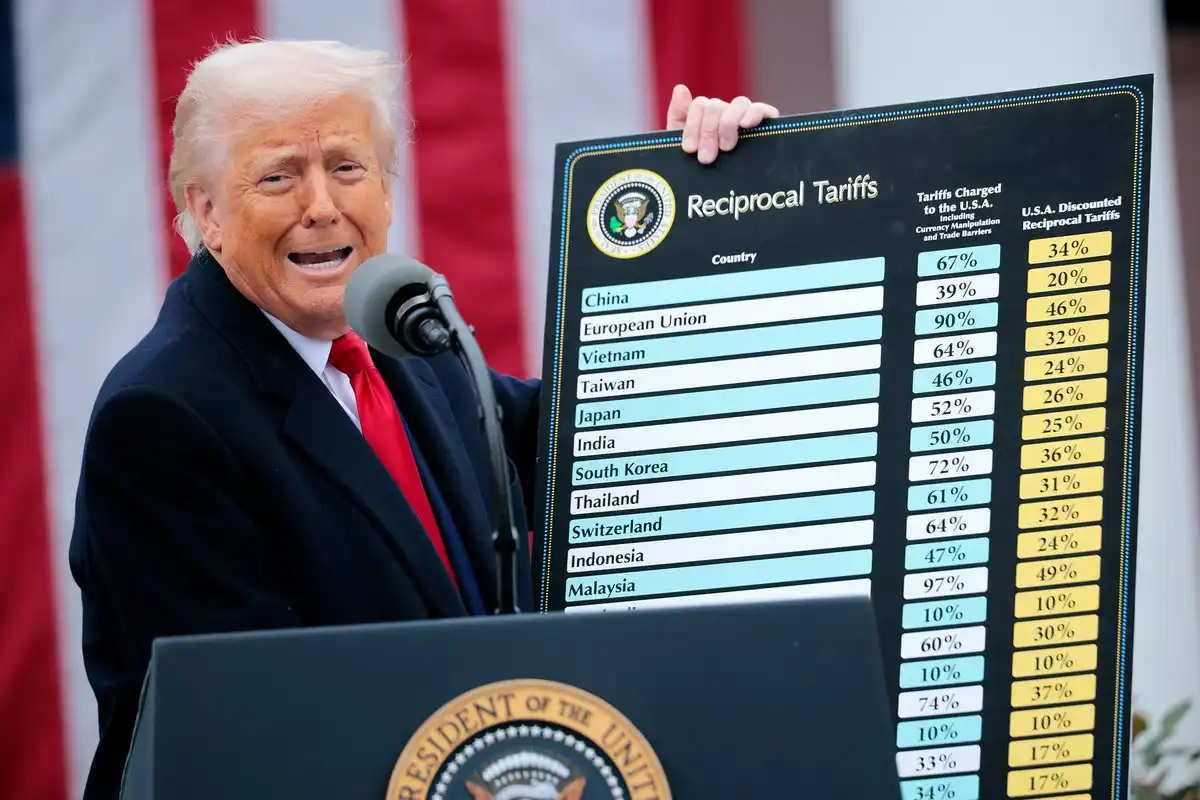
Senior White House officials stated that the baseline tariff rate (10%) will take effect at midnight on April 5, and the reciprocal tariffs will take effect at midnight on April 9.
U.S. Treasury Secretary Basant stated, "I advise all countries not to take retaliatory actions. We can see if there will be different tariff floors (from the announced numbers). Trump's mindset may be to stabilize things temporarily. I was not involved in the negotiations; we will see if there are any negotiations before April 9 (the effective date of reciprocal tariffs)."
Rise then fall, both cryptocurrency and stock markets face indiscriminate attacks.
In the hours leading up to Trump's announcement of the tariff policy, the U.S. stock market experienced significant volatility. Nasdaq futures fell by 2.4%, and S&P 500 futures dropped by 1.6%. Reuters reported that this indicates investors expect a significant drop when the stock market opens on the 3rd. After the tariff policy was implemented, the U.S. dollar index DXY resumed its downward trend, falling below the low point when Trump announced the comprehensive tariffs, with the latest reading at 103.24, peaking above 104 when the reciprocal tariffs were announced.
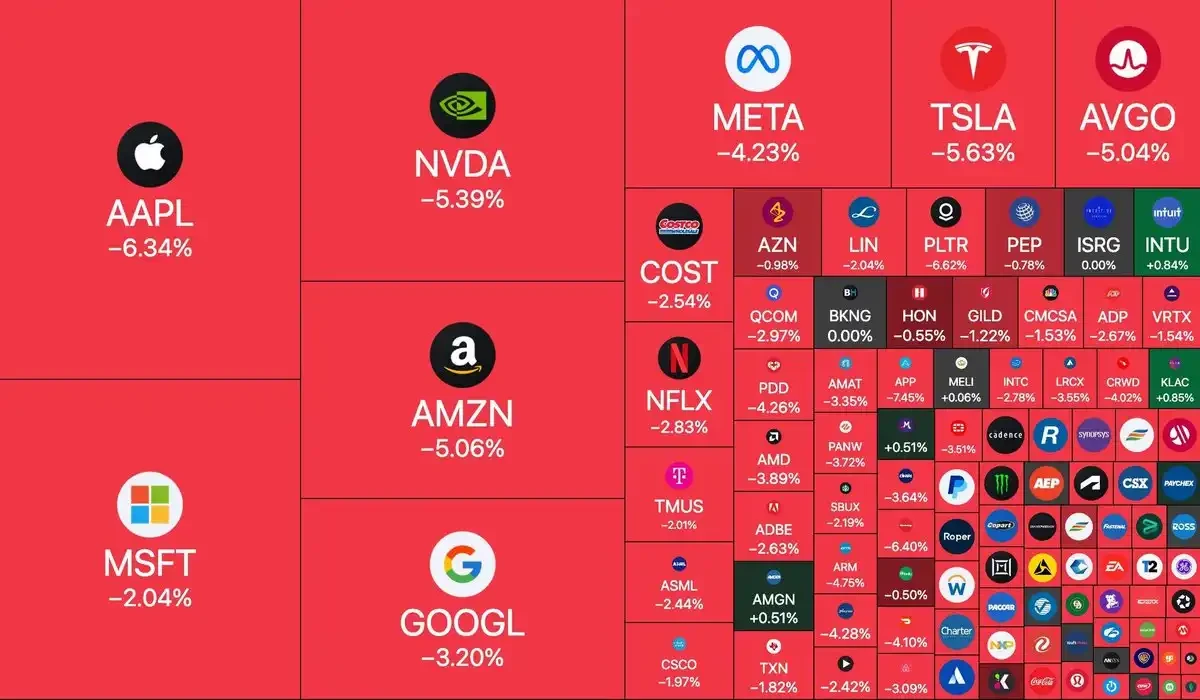
In the cryptocurrency market, when Trump announced the baseline tariffs of 10% at the beginning of the meeting, Bitcoin surged to $88,000, reaching its highest level since March 25, up over 5%; however, after it was announced that additional tariffs would be imposed on about 60 countries with the largest trade imbalances with the U.S., Bitcoin retraced most of its gains, falling below $82,500. Based on Bitcoin's current performance, it can be said that it has no safe-haven attributes. Meanwhile, spot gold briefly broke through $3,160 per ounce, setting a new historical high.

The altcoin market experienced a particularly grim aftermath of this rise and fall. According to Coinglass data, $293 million was liquidated across the network in the past 4 hours, including $187 million in long positions and $106 million in short positions.
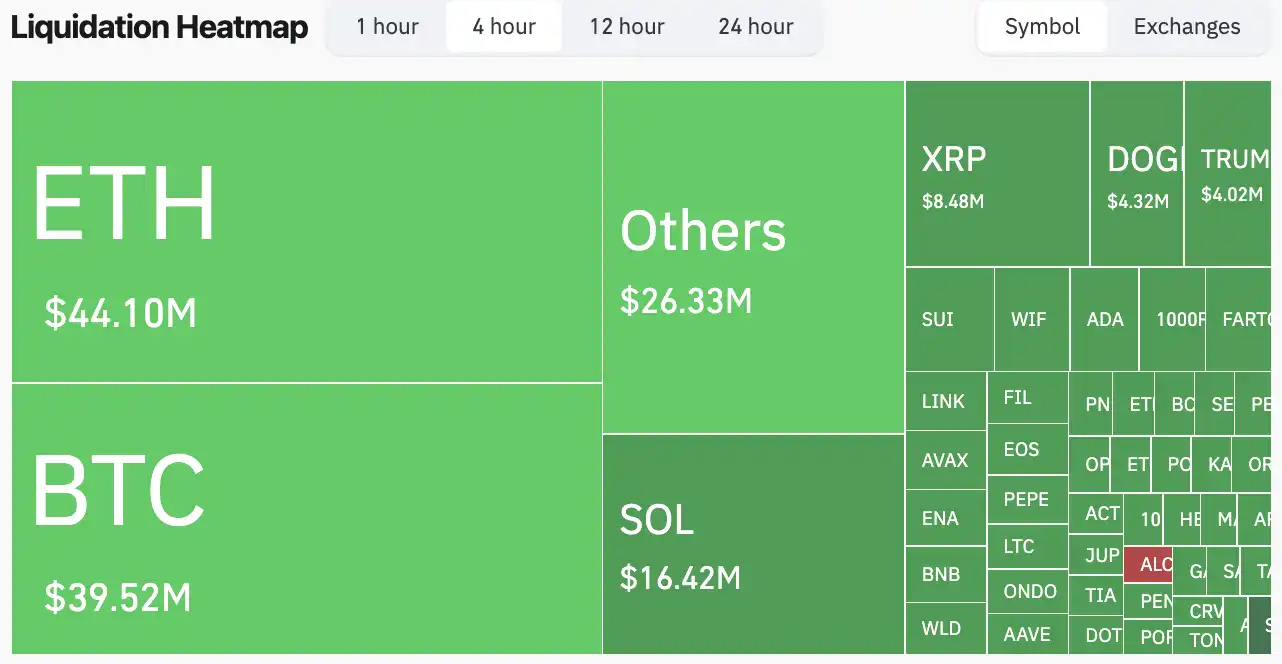
Absurd tariff calculation methods.
Trump claimed that the new tariff measures aim to promote U.S. manufacturing, "Make America Rich Again," and that "jobs and factories will come back," even declaring that April 2, the day of the reciprocal tariffs announcement, will be America's "Liberation Day." However, at the same time, the tariffs imposed on Southeast Asia are among the highest, with Vietnam at 46%, Thailand at 36%, and Cambodia at 49%, which will significantly harm the real economy.
According to crypto KOL Fiona, after Trump's election, many entrepreneurs believed that the U.S. would impose the highest tariffs on China, leading many to buy land and build factories in Southeast Asia, especially in Thailand and Vietnam. Due to the significant number of this group, local industrial land prices skyrocketed in a short time, similar to a housing rush, with high costs associated with purchasing and local labor registration laws.
For example, Nike employs over 450,000 workers in its 130 factories in Vietnam, and its stock price has fallen over 6%. Additionally, due to the tariffs, Nike's brand revitalization plan will also be affected. Nike's production capacity in Vietnam accounts for more than 50% of its total global output. This potential tariff policy is expected to increase Nike's costs by over $400 million annually.
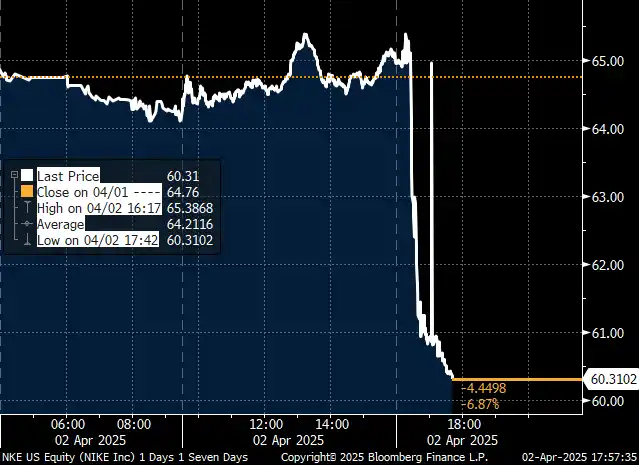
For the U.S., implementing absolute reciprocal tariffs will not benefit American businesses and citizens. While it may increase federal revenue in the short term, it will lead to soaring prices for American goods in the long run, thereby driving up inflation rates.
Economists are concerned that Trump's tariff policy will inevitably raise U.S. inflation and damage consumer confidence. Predictions from Yale University's Budget Lab indicate that after the implementation of "reciprocal tariffs," if other countries do not retaliate, U.S. personal consumption expenditure prices will rise by 1.7% in the short term, and the real GDP growth rate will decline by 0.6 percentage points by 2025; if other countries retaliate, the increase in U.S. personal consumption expenditure prices will expand to 2.1%, and the real GDP growth rate will decline by 1 percentage point.
Ironically, the so-called "tariff rate" data released by the Trump administration is itself an absurd calculation result. He claimed that certain countries impose tariffs on U.S. products as high as 30%, 40%, or even over 50%, but in reality, these numbers do not come from actual tariffs or non-tariff barriers, but rather from a pseudoscientific formula derived from "trade deficits divided by the total exports of the other party."
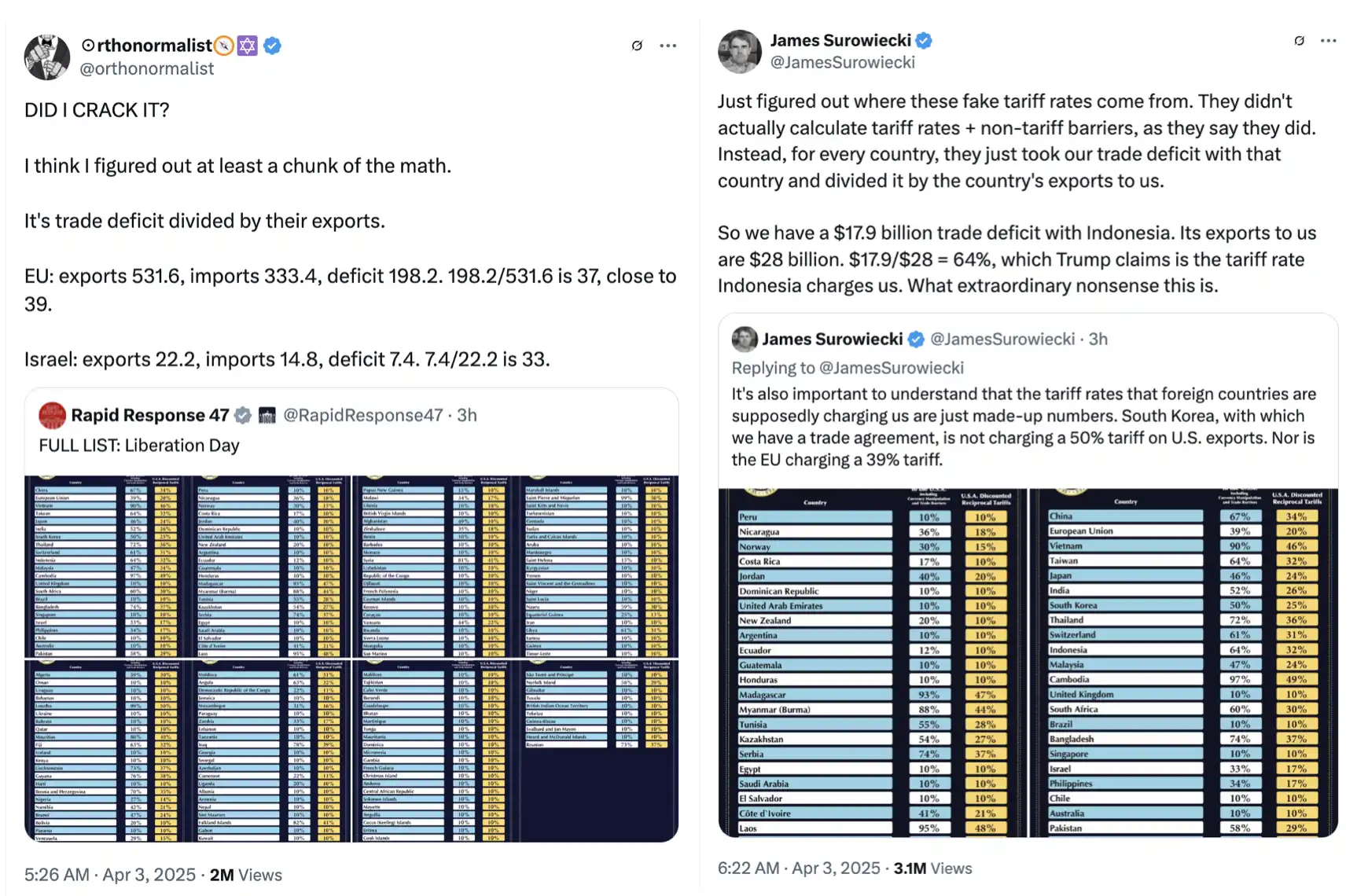
For example, the U.S. has a trade deficit of $17.9 billion with Indonesia, while Indonesia's exports to the U.S. are $28 billion. Dividing 179 by 280 gives 64%, which Trump claims is the tariff rate imposed by Indonesia on the U.S. Similar methods have fabricated "false tariff rates" of several percentage points for the EU, Israel, South Korea, and other countries, even disregarding existing trade agreements with South Korea.
This complete misunderstanding of "comparative advantage" and international trade structure has turned the so-called "reciprocal tariffs" into a political slogan and a tool for gaining attention in practice. The most ironic part is that while Trump accuses other countries of unfair high taxes, he himself imposes extreme tariffs, inadvertently harming American companies, brands, and middle-class consumers that have already relocated.
Moreover, high tariffs have not genuinely driven manufacturing back. From Trump's first term to Biden's takeover, the U.S. government has continuously promoted the return of industries, but over the past eight years, the effects of repatriation have been limited. Instead, the repeated trade policies and increased cost uncertainties have made overseas capital more cautious about investing in the U.S.
It can be said that this behavior of "falsifying tariff rates" using trade deficits not only reflects a disregard for the basic principles of the international economy but also exposes the shortsightedness and internal conflicts of the entire policy design. Trump's tariff policy, rather than "making America great again," is more about pushing reality into inflation and an investment winter through a game of miscalculated accounts, ultimately harming others without benefiting oneself.
Bottom fishing or empty positions, how will the cryptocurrency market move forward?
Last night's tariff results can be described as the worst version of previous market speculation, impacting global financial markets in various ways.
Chris Burniske, former head of crypto at Ark Invest and current partner at Placeholder VC, stated that he originally expected today (April 2) to be a positive turning point, believing the market was overly defensive, but reality proved otherwise. He expressed hope that tariff negotiations could quickly commence, saying, "I will not take aggressive actions; if the market remains in this range, I will choose to hold; if there is a gap down due to today's movement, I will pay attention to some targets and consider adding positions."
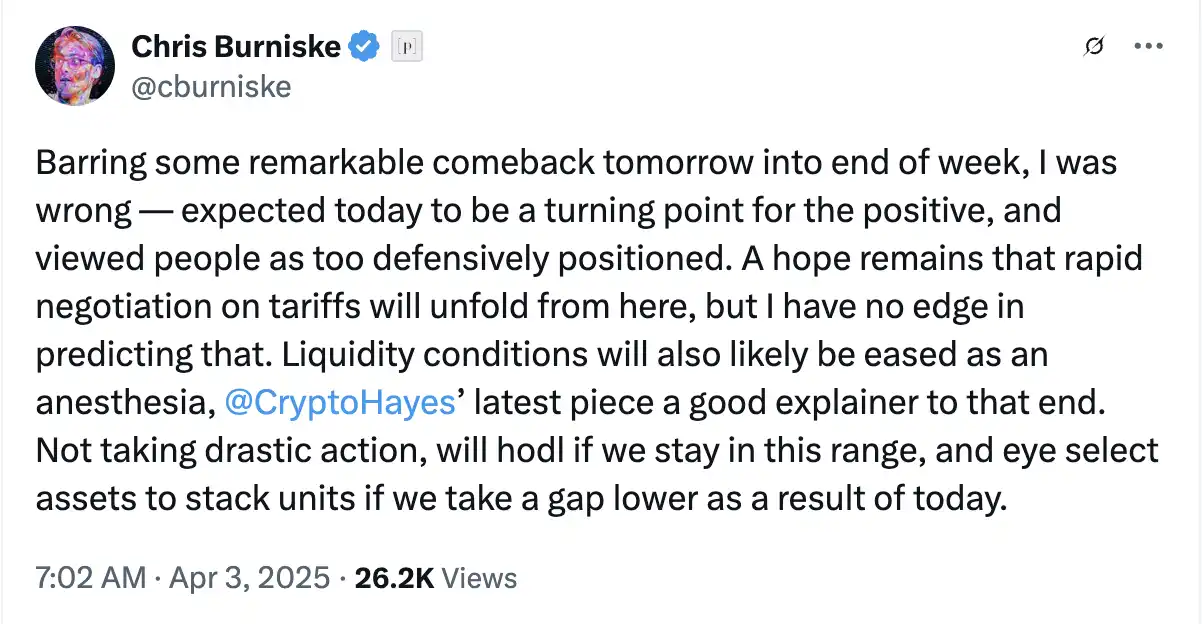
Arthur Hayes, co-founder of BitMEX, stated, "The market seems to dislike 'Liberation Day.' If Bitcoin can stay above $76,500 between now and U.S. tax day (April 15), then we can consider ourselves out of danger."

免责声明:本文章仅代表作者个人观点,不代表本平台的立场和观点。本文章仅供信息分享,不构成对任何人的任何投资建议。用户与作者之间的任何争议,与本平台无关。如网页中刊载的文章或图片涉及侵权,请提供相关的权利证明和身份证明发送邮件到support@aicoin.com,本平台相关工作人员将会进行核查。




